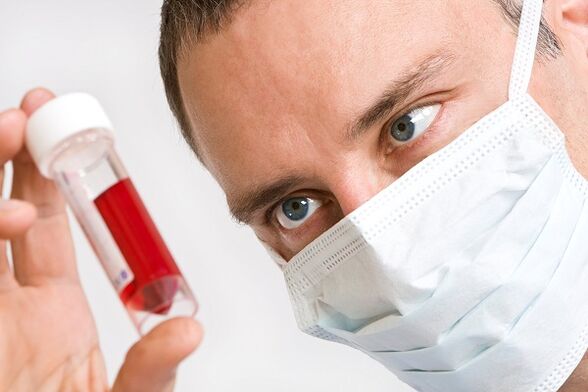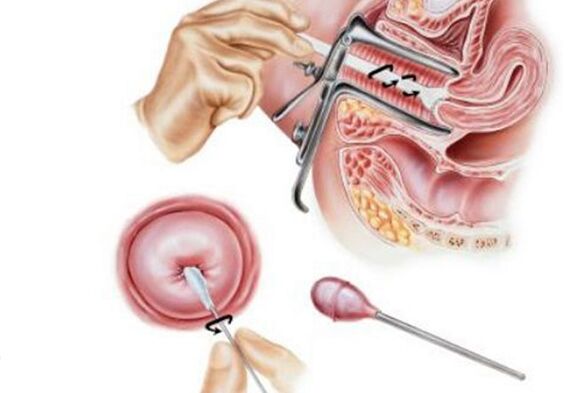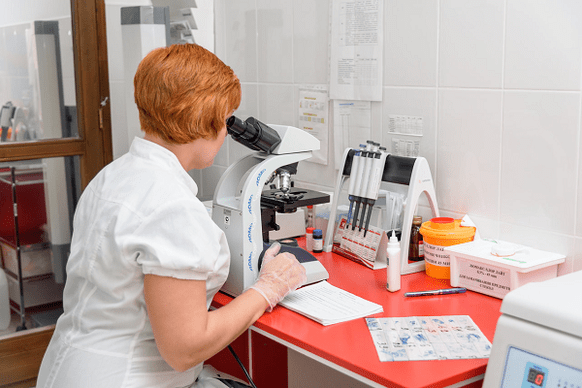If the analysis needs to be passed to identify HPV, there is nothing to worry about. Most procedures are absolutely painless, and some are fairly well tolerated by any patient. The most common questions regarding the delivery of testsConsider it.
What is HPV?
Human papillomavirus is a microorganism that has a cellular structure of DNA. When introduced into the human body, HPV DNA causes a mutation, leading to irreversible processes. Most of the population is already carriers of the virus, but manyFew people realize this, because the virus does not manifest itself in any way.
As the body fails, the immune system weakens and growths appear on the body. For all formations on the skin, except moles and acne, it is HPV that affects. If the growth is not treated immediatelyIf left untreated, malignancy occurs and a harmless wart can turn into cancer of the cervix in women and cancer of the urethra in men.
Why is the human papilloma virus dangerous?
When papillomas, genital warts or warts appear on the body, an ordinary person is not able to distinguish them from each other, mistaking them for something that is not capable of causing harm.
It's not that simple - a small papilloma can grow to such a size that it will cause a lot of discomfort - from aesthetic discomfort to the development of a cancerous tumor. More than 130 types of human papillomavirus are known and each of them differs in different ways. appears from.

The most common of them are types 16 and 18, which provoke cancer of the mucous membranes, cervix, vagina, penis and other similar diseases. Since the first person is not aware of the presence of the virus in the body, HPVDevelops slowly and after 5-10 years one sees changes in their body as they grow.
Papillomas can be analyzed in any clinic. After 40 years, more than half of the lesions become malignant. Timely diagnosis gives a person the chance of a painless old age, which will not be affected by cancer.
Why Test for Human Papillomavirus?
To protect yourself from oncogenic diseases, you must timely identify the potential threat to life and health. With a comprehensive list of reasons for its spread, HPV is transmitted from person to person through close contact -Hugging, kissing, intercourse, using common hygiene products.
The virus takes root under the skin and destroys healthy DNA structures, which mutate throughout the body. When immunity fails, HPV manifests as warts, papillomas, and similar rashes on the skin. Only a test can detect the virus at an early stage and prevent its further spread.
When is HPV testing scheduled?

When the first signs of disease appear on the body, doctors can also look for them with a visual exam. An HPV test is prescribed to understand where in the body the virus came from, identify the type, and then eliminate.
Given that not every infected person is capable of becoming a cancer patient, no one wants to tempt fate, which means getting tested is essential. If a woman is planning to become pregnant, she should be tested for HPV. Testing should be done, as the virus will easily pass into the child. The father should also not be indifferent, as he may be a carrier of papillomavirus.
Features of passing the analysis for HPV
It is believed that the detection of HPV before the age of 30 is not informative, as the disease progresses far beyond the human eye. After 30, the first tests are prescribed that can detect papillomavirus even in its early stages. Huh.
The less time that has passed since the moment of infection, the more effective the subsequent treatment. It is necessary to identify the moment when normal cells begin to grow into cancer. The methods of diagnosis of human papillomavirus depend on several factors:
- Identification of the virus and the fact of its presence in the body
- find variety
- Assess the damage that occurred during the period in which the person did not seek medical help
- Prescribe high quality and effective treatment
Remember:The virus will never completely leave the host, as it already interacts with cells containing the body's DNA. HPV will remain silent until the immune defenses are weakened.
What kind of analysis to do to detect HPV?
- Colposcopic examination. This method is used to test for HPV in women. It is designed to detect genital warts. It is prescribed for women to detect genital warts located in the cervical region.
- Cytology. A smear is taken, which contains epithelial cells, then the samples taken are examined under a microscope. If the cells are replaced, there is a risk of developing HPV. There is a risk of a false result.
- Histology. This is in addition to cytology to exclude an error. A small piece of affected tissue is taken and the doctor assesses the difficulty of the condition through a microscope. With the help of histological examination, the nature of the formation is determinedIt is possible to determine.
- PCR diagnostics. Most accurate method with 98% accuracy. Swab, urine, blood, or amniotic fluid taken
If at least one test reveals the presence of the virus, the patient will be referred for additional analysis to ensure accuracy of the result. If the result is found to be false positive, there may be contamination of test material or generally accepted sampling techniquesviolation may be the reason.
Sometimes patients prepare for the analysis incorrectly or choose the wrong time for the procedure - these factors can also give incorrect results.
test rule
In addition to trusting the attending physician, the patient himself must follow the procedure for passing the analysis and know the basic procedures. The doctor is the specialist, but the health of the patient.
How are biomaterials taken?
Strokes are taken with a soft brush, which looks like a brush. In free clinics, a Volkmann spoon is sometimes used - it is a small spoon on a long stem. from is inserted into the canal, then removed with rotational movements. The brush is placed in a sterile flask and sent for further research.
How to prepare for the procedure for women
2 days before the procedure, you can not have sex, use soap with an antibacterial effect, douche, use tampons. If a smear was taken from the cervix, then after 3 weeks of the procedure, You can't have sex, play sports, overheat, swim in public places, and take blood thinners.

How to prepare for the procedure for men
Sexual intercourse is excluded, take a bath without detergents for 2 days. Do not urinate before the procedure.
General preparation for the procedure
It is necessary to inform the doctor about all the medicines taken by a person in the last 2 months.
How is the HPV blood test taken?
Used for PCR diagnostics. With a finger, sometimes from a vein, depending on what kind of analysis the person will be doing. A slight tingling sensation from the injection is the maximum discomfort from the procedure. If the vessels in the elbow area are narrow, So the process of taking blood will be difficult, but the doctor will tell you how to properly dilate the vein.
The procedure is performed on an empty stomach, you can not even drink water. It is advisable to take a chocolate bar with you. 3 days before donating blood, it is necessary to exclude from the diet all foods that cause allergies.
How is urine tested?
It is better to take care of the sterile jar yourself. You can buy it at the pharmacy. Fill the morning urine in the jar on an empty stomach. Then take it for testing, preferably immediately, the maximum duration is 4 hours or the result is invalid. This method is not as accurate as taking blood, but if donating blood is not possible, then you have to use this method.

How long does it take to be tested for HPV in women and men?
If a colposcopic examination took place, the result is issued immediately. With a cytological examination, the results will be ready only after a week. The histology is done for 3 days, then you can have the test result on your hands. With PCR diagnostics, you can have the results immediately or wait up to 2 days.
When and how often should you get tested for HPV?
Until the age of 30, only those people who have clear signs of growth are screened. Usually at this age, HPV is dormant and has not spread throughout the body.
At the age of 30 to 60 years the test has to be taken every 3 years. Immunity levels are falling, so the symptoms of human papillomavirus should be detected in time.
After 60 years there is usually no examination. If during the last two tests the presence of the virus was not detected, you do not need to worry. If there were manifestations, then you will have to engage in treatment untilThe last 2 results should not be negative.
Cost and Cost for Delivery of HPV Tests
In the presence of serious diseases or at the conclusion of a cancerous tumor, most investigations are free of charge. They can be prescribed by the attending oncologist.
For a complete picture of virus development, 2 methods are usually used to eliminate the possibility of false information.
decoding the results
Decryption should be done only by the attending physician. Nothing good will come from the intervention of the patient. To understand what the consequences are, you should pay attention to the following words:
- reference value - HPV is absent;
- positive result - an oncogenic HPV strain was detected;
- The result is negative - no cancer manifestations were found, but there is a possibility of finding other types of HPV.
If the patient decided to take health and find out about the presence of human papillomavirus in his body, then the above methods should be resorted to. Timely diagnosis saved millions of lives and helped to find a calm, healthy life. It is possible to prescribe quality treatment only after thorough passing of the tests.
Sometimes the patient is sent for tests without outward signs of the disease, and the procedure shows that the body has HPV. In this case, the treatment will not take much time. That is why the doctor seeks help in time. recommend.














































































